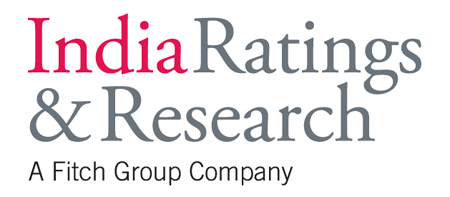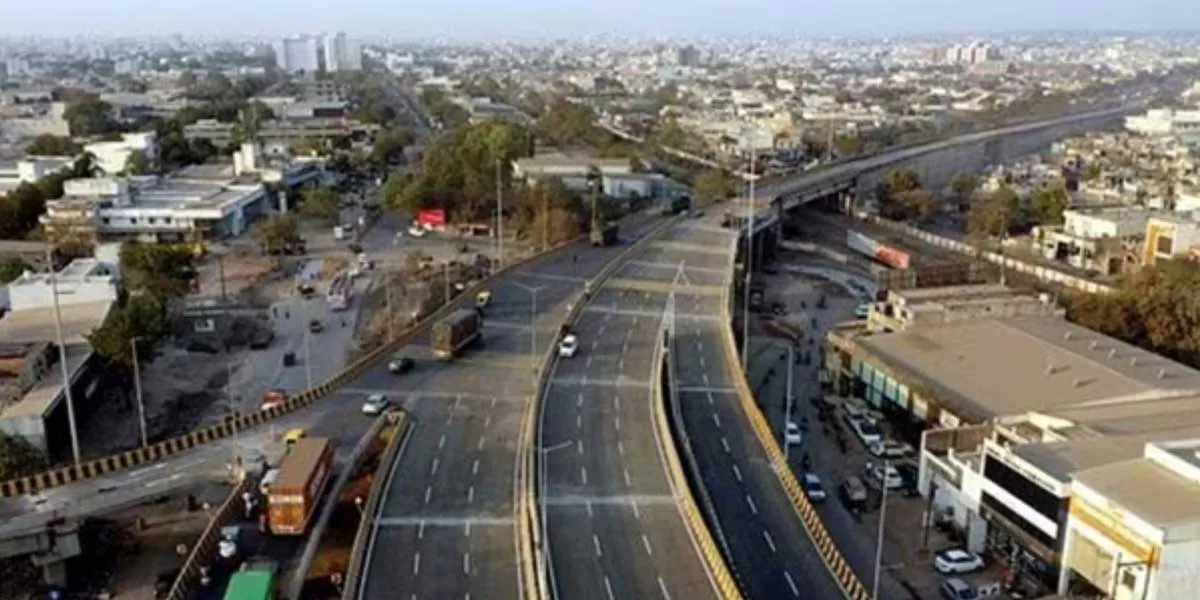India Ratings and Research (Ind-Ra) has maintained a negative outlook on energy and transport infrastructure for 2HFY21, stemming from a likely low demand, driven by low thermal plant load factor and subdued wind generations, and the resultant impact on coverage metrics. The agency has also maintained a negative outlook on the roads and airport sectors.
Toll collections rebound was strong at around 90 per cent of pre-COVID-19 levels in the first 15 days of September 2020, exceeding Ind-Ra’s April 2020 expectations. Nevertheless, possible regional lockdowns, a surge in COVID-19 infections, travel restrictions, people behavioural changes and a weaker economic recovery are threats to further growth. The airport sector was impaired by almost nil operations in 1QFY21 and restrained passenger movements. The short-term risks to traffic recovery cloud the sector prospects, but the long-term potential is intact, given the protected returns for airports and a long concession framework for others. Liquidity would be an important rating consideration for airports.
Rating Outlook
Energy Infrastructure Projects – Maintained at Outlook Negative: Ind-Ra expects the effect of liquidity enhancement on distribution companies (discoms) to be temporary and payables from discoms are likely to increase slightly by FYE21 year on year. Absent this, the receivable profile would have exacerbated the generators’ problems. Policy actions such as the Reserve Bank of India’s COVID-19 moratorium and discom package play a critical role in beefing up liquidity for projects. That being said, the weak operating profiles of most discoms continue to be drag on the sector. Other measures to boost liquidity for discoms include waiving off one month’s billing by NTPC (‘IND AAA’/Stable) and Power Grid Corporation of India and a reduction in late payment charges to 12 per cent during 24 March 2020-30 June 2020.
Toll Road Projects - Maintained at Negative Outlook: India’s toll roads’ V-shaped recovery was comparable to geographies such as China. In the first 15 days of September 2020, toll collections touched 90 per cent of the average in FY20. The recovery in toll roads have been swifter than Ind-Ra’s original expectation; however, projects have displayed a varied trend of revenue recovery due to individual corridor specific dynamics. Commercial traffic contributes 75 - 80 per cent to the toll collections and the balance is from passenger vehicles.
While the six-month moratorium provided relief until August 2020, the in-built liquidity available for projects in conjunction with the recovery in toll collections would be critical to determine the ability of projects to withstand stress. Assets in the ‘AAA’ and ‘AA’ rating categories not only comply 100 per cent with the debt service reserve requirement, but also maintain higher liquidity. Projects in the ‘A’ category maintain a stipulated debt service reserve or are backed by a strong sponsor. However, projects in the lower categories have limited headroom for the same. Ind-Ra will closely monitor the resilience of its rated portfolio and available liquidity and the strength of sponsors to support their SPVs in case of a slower-than-expected recovery.
Availability-based Projects – Maintained at Stable Outlook: Availability-based projects are underpinned by stable annuity streams with minimum disruptions to availability; however, the slow transmission of the regulator-prescribed bank rate cuts in project lending rates will impact debt service coverage ratios (DSCRs) in operational hybrid annuity model (HAM) based projects. The regulator has cut the bank rate by 200 bp from 6.25 per cent (1 June 2019) to 4.25 per cent (31 Aug 2020). The transmission of the same, however, has been limited - public sector banks, private sector banks and non-banking finance companies have reduced bank rates by 84 bp, 56 bp and negligible, respectively. A 200 bp expansion in the spread between the bank rate and the applicable MCLR on Ind-Ra rated HAM projects (assuming no MCLR cut) could lower the average DSCR by 0.12x and equity internal rate of return by 530bp. However, the impact on average DSCR (reduced by 0.09x) and equity internal rate of return (reduced by 409 bp) will be lower in the event there is a 40 per cent transmission.
Under-construction HAM projects face execution challenges with nearly 50 per cent of the projects behind schedule. Of the impacted projects, nearly 30 per cent are facing sponsor related issues, 30 per cent force majeure events such as excessive rains and floods, and the balance 40 per cent are grappling with authority-related issues such as right of way, utility shifting, pending approvals. While the HAM model provides cushion towards cost escalations linked to price indices, overruns due to an increase in soft costs and interest during construction could lead to cost overruns and lower margins & returns for project developers.
Airports – Outlook Revised to Negative from Stable: In the midst of CAPEX, the COVID-19 led passenger shock has derailed the plans of relying on internal cash accruals for funds. Absent liquidity and limited flexibility on CAPEX phasing plan, airports could increase their leverage ratios to meet the capital expansion. The tariffs could soar significantly to offset the dual impact of increased annual revenue requirement (due to CAPEX) and lower passenger growth. With August 2020 domestic passenger levels at just 24 per cent of FY20, the pax recovery will be protracted. With travel-related issues lingering, return to normalcy is unlikely before FY23. Also, any longer-than-expected delay in the development of COVID-19 vaccine could play a spoilsport on this assumption. Given the links between aero and non-aero, non-aero has encountered significant losses. While airports have been curtailing their expenses, the fixed nature of expenses limits the scope for reduction. With metro airports in the midst of capacity expansion, timely Airports Economic Regulatory Authority orders are critical.
Solar Power – Outlook Revised to Stable from Negative: Solar generation in 1QFY21 was slightly lower (3 per cent-4 per cent) than that of 1QFY20. Seasonal variations to some extent depending on the monsoon duration in a year are not unusual for solar projects. Project and grid availability have been above 95 per cent for most of the portfolio. Sporadic instances of grid issues because of overloading at the substations belonging to intrastate transmission systems and tracker underperformance have led to significant deviation in generation compared to estimates in few projects.
Wind Power – Maintained at Negative Outlook: There was an unusual 15 per cent yoy fall in power generation in 5MFY21, because of a fall in wind speed, despite a 6 per cent increase in installed capacity. Historically, generation during April-August had a share of about 60 per cent of the annual generation and by September, the share had been about 70 per cent of the annual generation. Thus, the underperformance till date might have an impact on annual generation in the range of 10 per cent-12 per cent, on all India basis. Affected states that are likely to have a generation fall of 10 per cent-15 per cent yoy are Tamil Nadu, Karnataka, Maharashtra, Andhra Pradesh and Madhya Pradesh. Gujarat and Rajasthan are the least affected and the annual drop in generation is not likely to be more than 5 per cent. Debt service is not under risk for most investment grade companies because of accumulated liquidity and debt service reserve. The liquidity indicator is above 1.4x for 80 per cent of the portfolio and the balance portfolio has a ratio in the range of 1.15-1.25x, after considering the lower generation. Grid and machine availability remain stable.
Uncertainties Compounding for Under-construction Solar Project: Given the multitude of developments such as COVID-19 related lockdowns, change in duties for solar panels and consequent difficulties in importing panels, constraints in mobilising labour for implementation, delays in signing of power purchase agreements after bidding, delays in tariff adoption and changes in module prices, the economics of a project could be under significant stress compared to the scenario that developers envisaged at the time of bidding. Risks for under construction projects have increased because of these uncertainties and could delay financial closure. However, the number of acquisitions in renewable projects has kept the investor interest in the sector high, thus encouraging developers to bid for projects.
Thermal Power – Maintained at Negative Outlook: Thermal projects with PPAs for a significant proportion of installed capacity continue to have revenue stability. That being said, the general fall in demand had affected the plant load factor for projects and discom stress is elevated on thermal assets. Projects with untied capacity have revenue pressure due to low prices in merchant market (INR 2.35-2.60/kWh during 5MFY21). Coal availability is comfortable, given the fall in generation during 5MFY21, following the fall in energy demand caused by the lockdown. Ind-Ra rated thermal projects mostly have tied-up PPAs and debt is sized factoring in the uncertainties from untied capacity. Internal liquidity and demonstrated sponsor support to handle any temporary impact on revenue booking and delay in realisation support the ratings. Central Electricity Regulatory Commission has circulated a draft methodology for allowing pass-through of cost for complying with the latest environment regulations for thermal plants. The envisaged methodology does not provide adequate certainty on the entire cost recovery and thus reluctance of lenders to fund this CAPEX might continue. The cost recovery is envisaged over 25 years, while the debt repayment tenor is not likely to extend beyond 15 years.
Transmission Power – Outlook Revised to Stable from Negative: Ind-Ra expects the collection ratio of at least 90per cent in FY21, based on the increasing revenue realisation for interstate transmission projects since April 2020. Among the intrastate counterparties, U.P. Power Corporation Limited (debt rated) has delayed payments significantly. Other counterparties such as distribution utilities of Maharashtra and Rajasthan have been timely in making payments to transmission companies. Availability of the projects has been above 99 per cent for the past 12 months. The Sharing Regulations 2020 from Central Electricity Regulatory Commission include the updated methodology for billing inter-state transmission consumers, collection terms and disbursement to transmission licensees. The new regulations do not have any adverse impact on transmission companies (licensees). Revenue sharing mechanism is kept intact in the new regulations and hence the counterparty diversification continues. The new regulations will be effective from 1 November 2020 and a temporary blip in collections may occur during the transition to new regulations.


















